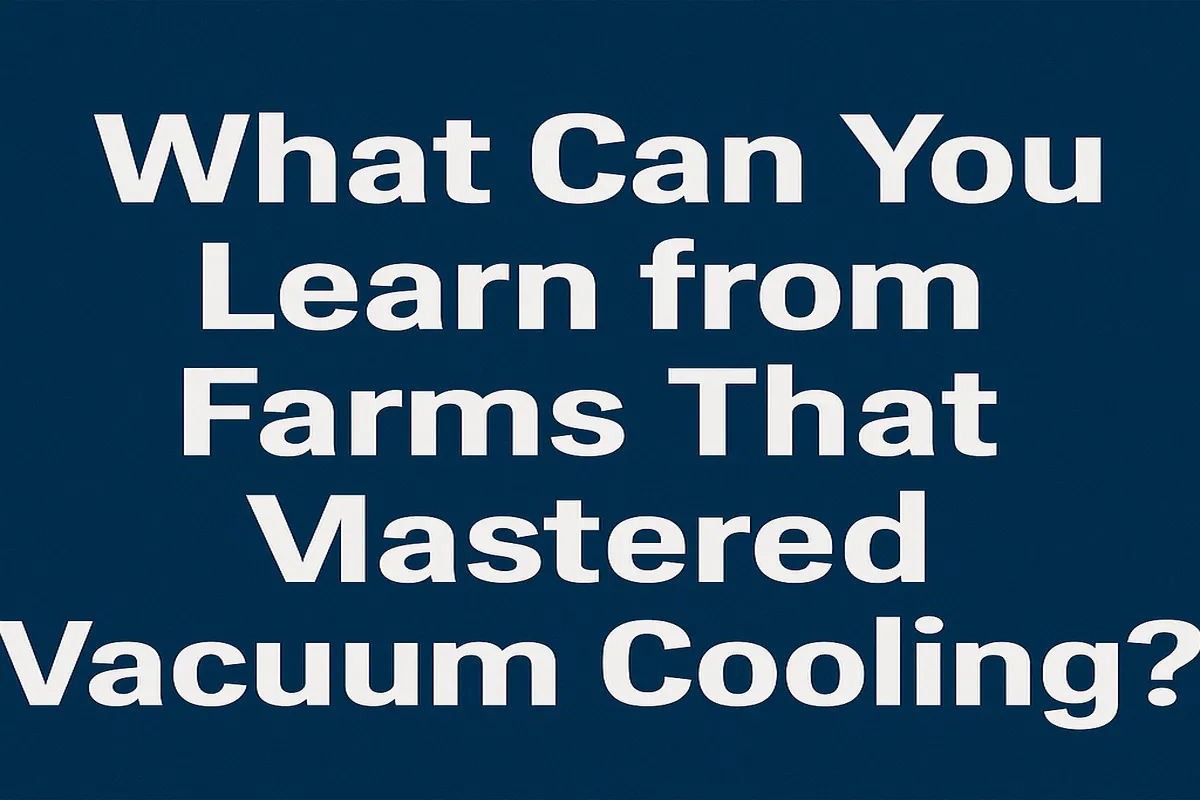
What Can You Learn from Farms That Mastered Vacuum Cooling?
You see the challenges in your own operation every day: the race against field heat, the constant worry about shelf life, and the pressure to deliver perfect quality to demanding buyers. You’ve heard about vacuum cooling, but you wonder: Does it really work in the real world? What results are other growers actually getting?
The most successful growers use vacuum cooling not just as a machine, but as the core of a new operational strategy. They’ve proven that this technology dramatically cuts waste, unlocks new high-value markets, and delivers a powerful, measurable return on investment.
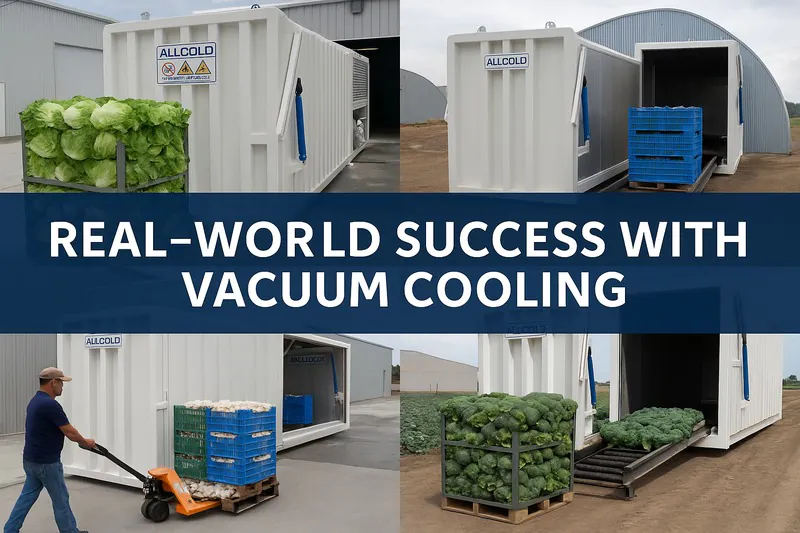
Theories and specifications are one thing; seeing the transformation with my own eyes is another. I’ve been fortunate enough to partner with growers and food producers all over the world, and their stories are the best proof of what this technology can do. It’s not just about selling a machine; it’s about solving a problem and seeing a business thrive as a result. From massive lettuce fields in North America to specialty mushroom farms in Europe and ambitious exporters in Southeast Asia, the fundamental challenges are the same. These case studies aren’t just stories; they are roadmaps that you can learn from.
How Did a Large-Scale Grower Solve His Post-Harvest Bottleneck?
You might be running a large-scale operation, just like my client Carlos in Mexico. Your harvest is measured in tons per hour, and your biggest fear is a delay in the packinghouse that brings your entire multimillion-dollar operation to a standstill. You need a solution that can keep pace with a massive harvest.
By integrating a large, 10-pallet twin-chamber vacuum cooler into their packing line, a major lettuce and broccoli farm eliminated their cooling bottleneck, synchronized their harvest and logistics, and cut their in-house rejection rate by over 12%.
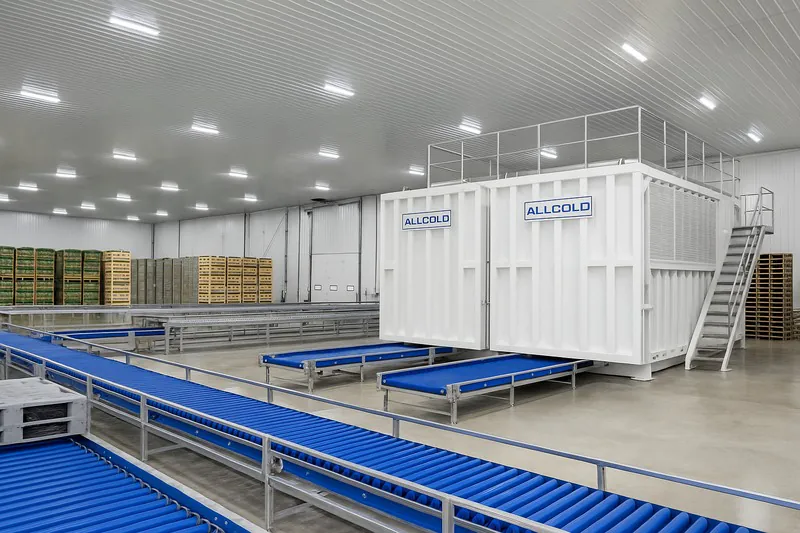
Case Study: The Commercial Lettuce & Broccoli Farm
I remember my first visit to this farm in Northern Mexico vividly. It was a massive, impressive operation, but they had a critical flaw. Pallets of freshly harvested lettuce and broccoli were piling up on the loading dock, waiting for their turn in the overworked forced-air coolers. The farm manager confessed that on hot days, they were losing the first pallets of the day to spoilage before the last ones were even harvested. The cold chain1 was broken before it even began. This is the exact kind of inconsistency that would make a professional buyer like Norman nervous about placing a large order. The challenge was clear: they needed a cooling solution that was as fast and scalable as their harvesting.
We designed a system around a 10-pallet, twin-chamber vacuum cooler2. This wasn’t just about dropping in a machine; it was about re-engineering their entire post-harvest workflow. While one chamber performed its 25-minute cooling cycle, the other chamber was being unloaded and reloaded. With automated in-feed and out-feed conveyors, the system became a continuous-flow engine at the heart of their packinghouse. The results were staggering. They could now cool over 20 pallets, or roughly 15 tons of produce, every hour. The pile-up on the loading dock vanished. They could schedule their refrigerated trucks with absolute precision, knowing exactly when a load would be cooled and ready. The technology gave them control over the most chaotic part of their day.
| Metric | Before Vacuum Cooler (Forced-Air) | After Vacuum Cooler (10-Pallet System) |
|---|---|---|
| Cooling Time to 2°C Core | 10-14 Hours | 25 Minutes |
| Hourly Throughput | Approx. 1-2 Pallets | 20 Pallets |
| Internal Rejection Rate | ~15% on hot days | < 3% |
| Shelf Life for Export | 7-9 Days | 20-25 Days |
| Market Access | Limited to North America (Truck) | Global (Sea Freight to Asia/Middle East) |
Can Vacuum Cooling Work for High-Value, Delicate Produce?
Perhaps you’re not a bulk commodity grower. You might be cultivating high-value, delicate products like specialty mushrooms, herbs, or microgreens. You know rapid cooling is important, but you’re terrified that the powerful vacuum process will damage your fragile, high-margin crop.
For a European organic mushroom farm, a specialized 2-pallet vacuum cooler with "soft-venting" technology proved to be the perfect solution. It preserved the delicate structure of the mushrooms, extended shelf life by 5-7 days, and enabled them to secure premium contracts with high-end retailers.
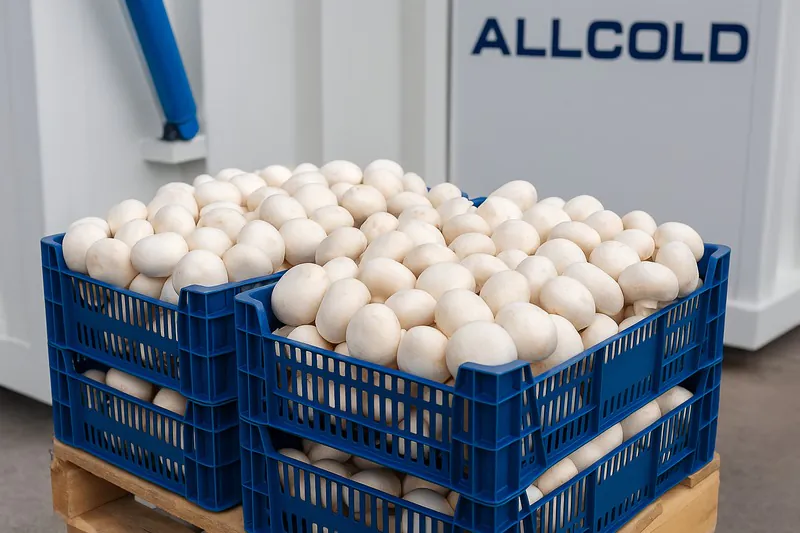
Case Study: The Boutique Organic Mushroom Farm
I worked with a family-owned farm in Poland that grew beautiful, high-value organic shiitake and oyster mushrooms3. Their challenge was the opposite of the lettuce farm. It wasn’t about massive volume; it was about extreme fragility. Mushrooms are mostly water and have no protective skin. Traditional cooling was too slow, causing them to lose moisture, turn brown, and become unsellable within days. They were interested in vacuum cooling4 but had heard stories of it "freezing" or "bruising" delicate products. They were right to be cautious. A standard, aggressive vacuum cycle designed for iceberg lettuce would indeed damage their product.
This is where customization becomes key. We provided them with a smaller, 2-pallet machine but equipped it with a sophisticated PLC controller and a pressure modulation valve. This allowed us to program a "soft-venting" cycle. Instead of dropping the pressure rapidly, the machine slowly ramps it down over several minutes. This gentle process coaxes the heat out of the mushrooms without causing cellular damage. The "sacrificial" moisture for evaporation came from the condensation on the mushrooms themselves, so their internal moisture was preserved. By cooling them to 3°C within 30 minutes of harvest, we essentially put them into a state of suspended animation. They stopped browning, retained their firm texture, and their shelf life jumped from 4 days to over 10. This was a game-changer, allowing them to stop using expensive air freight for shipping and access new national and international markets.
| Metric | Before Vacuum Cooler (Cold Room) | After Vacuum Cooler (2-Pallet Soft-Vent) |
|---|---|---|
| Product | Organic Shiitake & Oyster Mushrooms | Organic Shiitake & Oyster Mushrooms |
| Primary Challenge | Browning, water loss, short shelf life5 | Preserving quality and texture |
| Rejection Rate by Retailers | 10-15% | < 2% |
| Shelf Life | 3-4 Days | 10-12 Days |
| Key Technology | Standard Refrigeration | "Soft-Venting" Programmed Cycle |
How Can a Mid-Sized Farm Break into the Export Market?
You might be a mid-sized grower with ambitions to expand. You see the lucrative prices in export markets like Europe, the Middle East, or North America, but the daunting logistics of long-distance shipping hold you back. You need a way to make your fresh produce survive a 20-day journey by sea.
A sweet corn and mixed vegetable grower in Thailand invested in a versatile 4-pallet vacuum cooler, enabling them to extend the shelf life of their produce by 14+ days. This strategic move made sea freight a viable option, opening up high-value export markets and transforming their business model.
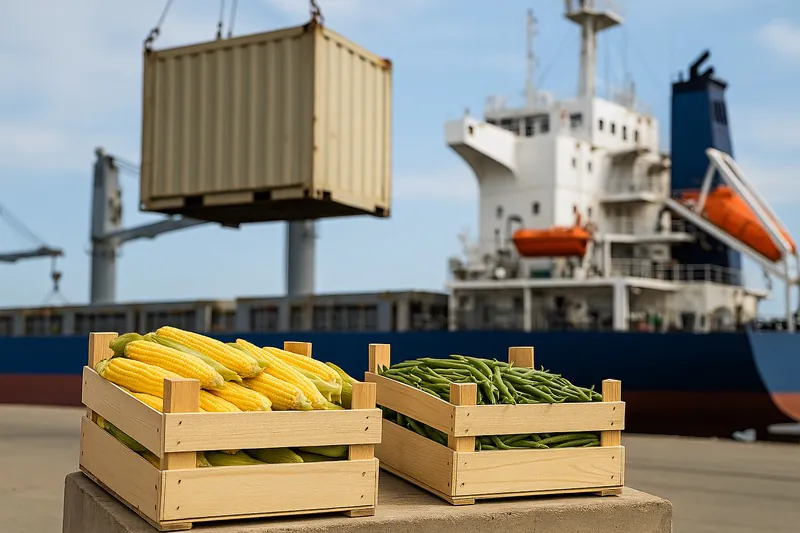
Case Study: The Ambitious Thai Exporter
This was one of my most rewarding projects. I met the owner of a farm in Thailand at the Fruit Logistica trade show in Berlin. He grew fantastic sweet corn, baby corn, and green beans, but his business was stuck. He was selling to local and regional markets, but he knew the real money was in exporting to supermarket chains6 in Europe and the Middle East. Air freight was too expensive, and his produce wouldn’t survive the 20-30 day journey by sea. He needed a bridge to the global market, and that bridge was an unbreakable cold chain7. A procurement manager like Sophia, who needs reliable, high-quality produce for her food chain, would be a perfect client for him if he could just guarantee the quality upon arrival.
We worked with him to install a 4-pallet vacuum cooler8—a versatile size perfect for his mixed-crop operation. The key here was adapting the process for his specific products. For sweet corn, we emphasized the importance of pre-wetting the pallets just before they entered the chamber. This provided the extra moisture needed to rapidly cool the dense cobs without drying them out. For his more delicate green beans, we used a slightly gentler cycle. The impact was immediate. The cooling speed was phenomenal, but the real magic was in what happened weeks later. Test shipments that were vacuum cooled arrived at their destination port looking almost as fresh as the day they were harvested. The kernels of the corn were still plump and sweet, and the beans had their signature snap. This proven success allowed him to sign contracts with European importers, completely changing the trajectory of his business. He was no longer just a local farmer; he was a global supplier.
| Metric | Before Vacuum Cooler (Crushed Ice) | After Vacuum Cooler (4-Pallet System) |
|---|---|---|
| Primary Goal | Local / Regional Sales | Export to Europe / Middle East |
| Shipping Method | Truck (Domestic), Air Freight (Limited) | Primarily Sea Freight |
| Shelf Life (Sweet Corn) | 8-10 Days | 25-30 Days |
| Logistics Chain Viability | 3-5 Days Max | 20-25+ Days |
| Profit Margin | Standard | Premium / Export-Level |
How Does a Central Kitchen Maintain Food Safety and Quality?
Your world is driven by tight schedules and zero tolerance for error, much like my client Sophia in Singapore. You manage a central kitchen supplying dozens of restaurants. Your biggest challenges are food safety and consistency. Traditional blast chillers are slow and create a hygiene nightmare.
A regional fast-food chain’s central kitchen adopted a specialized stainless steel vacuum cooler for cooked foods, slashing cooling times from 4 hours to 20 minutes, ensuring HACCP compliance, and improving the final product’s texture and taste.
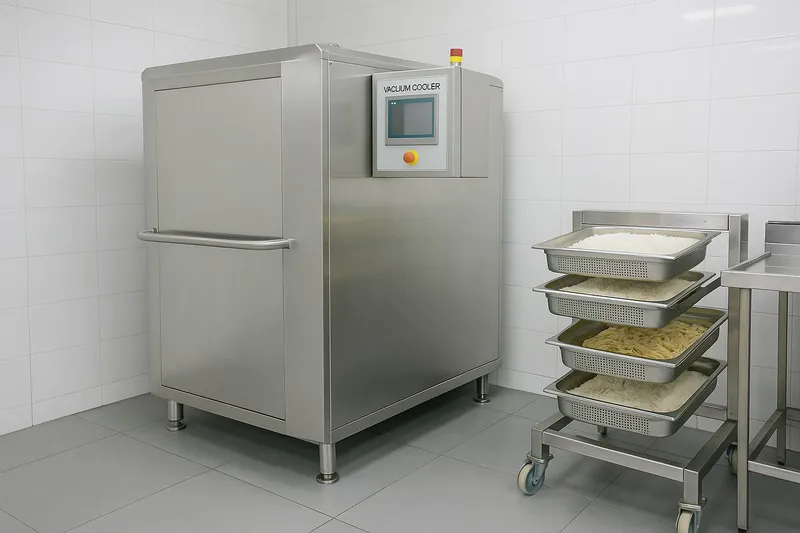
Case Study: The High-Volume Central Kitchen
I remember walking through Sophia’s facility. It was a high-pressure environment, producing thousands of meal components daily. Her main problem was cooling large batches of cooked rice, pasta, and sauces. They used large trolleys and blast chillers, but it was a massive bottleneck. The food would sit for hours in the temperature "danger zone" (above 8°C) where bacteria multiply rapidly. Even worse, the cooling was uneven; the outside of the batch would be cold while the core was still warm. For a detail-oriented manager like Sophia, whose entire operation depends on meeting HACCP standards, this was an unacceptable risk. Furthermore, cleaning the complex fans and coils of the blast chillers was a time-consuming, daily struggle.
We installed a vacuum cooler designed specifically for cooked food. Unlike vegetable coolers, these are built entirely from food-grade 304 stainless steel with no hard-to-reach corners, making them incredibly easy to sanitize. The process itself is transformative. A trolley of freshly cooked pasta at 95°C is wheeled into the chamber. 20 minutes later, it comes out with its core uniformly cooled to below 7°C. The rapid transit through the danger zone meant bacterial growth was virtually halted. An unexpected benefit they discovered was the improvement in food quality. The rapid cooling locked in moisture without making the rice mushy or the pasta clumpy. It allowed them to create a true continuous production line: cook, cool, package. This predictability and safety protocol is exactly what allows a business like hers to scale with confidence.
| Metric | Before Vacuum Cooler (Blast Chiller) | After Vacuum Cooler (Cooked Food Model) |
|---|---|---|
| Product | Cooked Rice, Pasta, Sauces | Cooked Rice, Pasta, Sauces |
| Cooling Time (95°C to <8°C) | 3-5 Hours | 18-22 Minutes |
| Time in "Danger Zone" | Hours | Minutes |
| Temperature Uniformity | Poor (Core remains warm) | Excellent (Uniform core-to-surface) |
| Compliance | HACCP Risk Point | Exceeds HACCP Standards |
| Daily Cleaning Time | 45-60 minutes | 10-15 minutes |
How Did an Industrial Bakery Eliminate a Major Production Bottleneck?
You might run a bakery, not a farm. Your biggest headache isn’t field heat, but the hours your freshly baked bread sits on racks, taking up valuable floor space while it slowly cools. This delay prevents you from slicing and packaging, bringing your entire production line to a halt.
By implementing a vacuum cooling system for their bread, a large industrial bakery cut its cooling time from 3 hours to just 4 minutes. This allowed them to eliminate hundreds of cooling racks, reclaim thousands of square feet of floor space, and create a continuous production line.
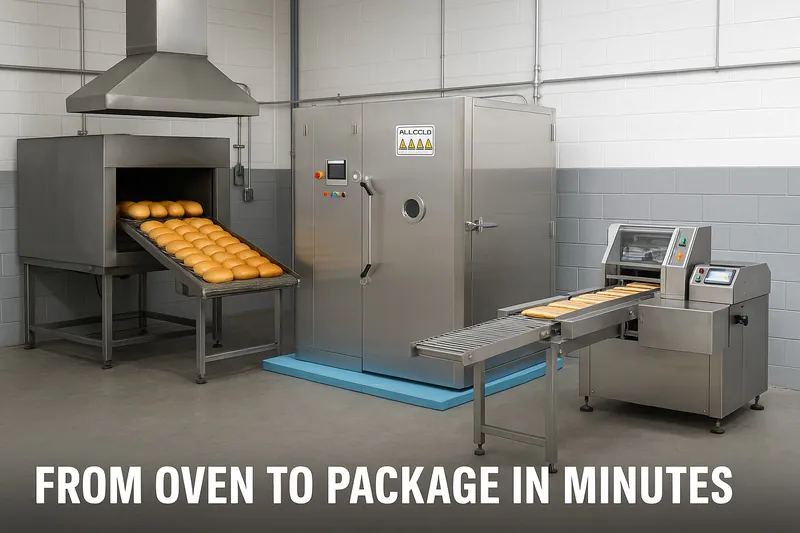
Case Study: The Space-Constrained Industrial Bakery
I visited a bakery that was a victim of its own success. They had orders pouring in, but they simply couldn’t produce any faster because they had run out of space. Every square foot of their facility was crammed with towering racks of cooling bread. A batch would come out of the oven, and then it would have to sit for 2 to 3 hours before it was cool and stable enough to be sliced. This cooling phase was a dead stop in their process. The owner told me, "I have the ovens and the mixers to double my output, but I don’t have the space to cool the product. I can’t build a bigger building." It was a classic, and very expensive, bottleneck.
The solution was a vacuum cooler designed for baked goods. Many people are surprised by this application, but the physics are perfect. When the hot loaf enters the vacuum chamber, the drop in pressure causes the water within the bread to boil at a low temperature (around 30-40°C). This rapid evaporation, called "baking-off," pulls heat from the loaf with incredible speed. It also removes excess moisture from the crumb while leaving a perfectly crisp crust. The result? Bread that took 3 hours to cool on a rack was now ready for slicing in under 4 minutes. They were able to get rid of over 80% of their cooling racks, freeing up a massive amount of floor space which they then used for a second packaging line. Production became a continuous flow: bake, cool, slice, package. The efficiency gains were enormous, and they were able to double their output without spending a single dollar on new construction.
| Metric | Before Vacuum Cooler (Rack Cooling) | After Vacuum Cooler (Bakery Model) |
|---|---|---|
| Product | Loaf Bread, Buns | Loaf Bread, Buns |
| Cooling Time | 2-3 Hours | 3-5 Minutes |
| Slicing/Packaging Start | After 2-3 hours | Immediately |
| Floor Space Required | High (Hundreds of racks) | Low (Single machine footprint) |
| Production Flow | Batch Process (with long pause) | Continuous Flow |
| Productivity Increase | Limited by space | +90% (achieved double output goal) |
Conclusion
These real-world examples show that vacuum cooling is more than a purchase; it’s a strategic investment in quality, efficiency, and market access. Whether large or small, every producer who has mastered this technology has reaped tangible and transformative rewards.
-
Learn about the cold chain’s importance in food logistics to ensure freshness and reduce spoilage during transport. ↩
-
Explore this link to understand how vacuum coolers can revolutionize post-harvest processes and enhance produce quality. ↩
-
Find out the health benefits and culinary uses of organic shiitake and oyster mushrooms. ↩
-
Explore this link to understand how vacuum cooling can preserve delicate products like mushrooms. ↩
-
Discover strategies to extend shelf life for perishable goods, crucial for reducing waste and increasing profits. ↩
-
Learn about the complexities and strategies involved in successfully exporting to major supermarket chains. ↩
-
Understanding the cold chain is crucial for ensuring the quality and safety of perishable goods during transport. ↩
-
Explore how vacuum coolers enhance the freshness and shelf life of produce, making them essential for exporters. ↩

Mila
You May Also Like
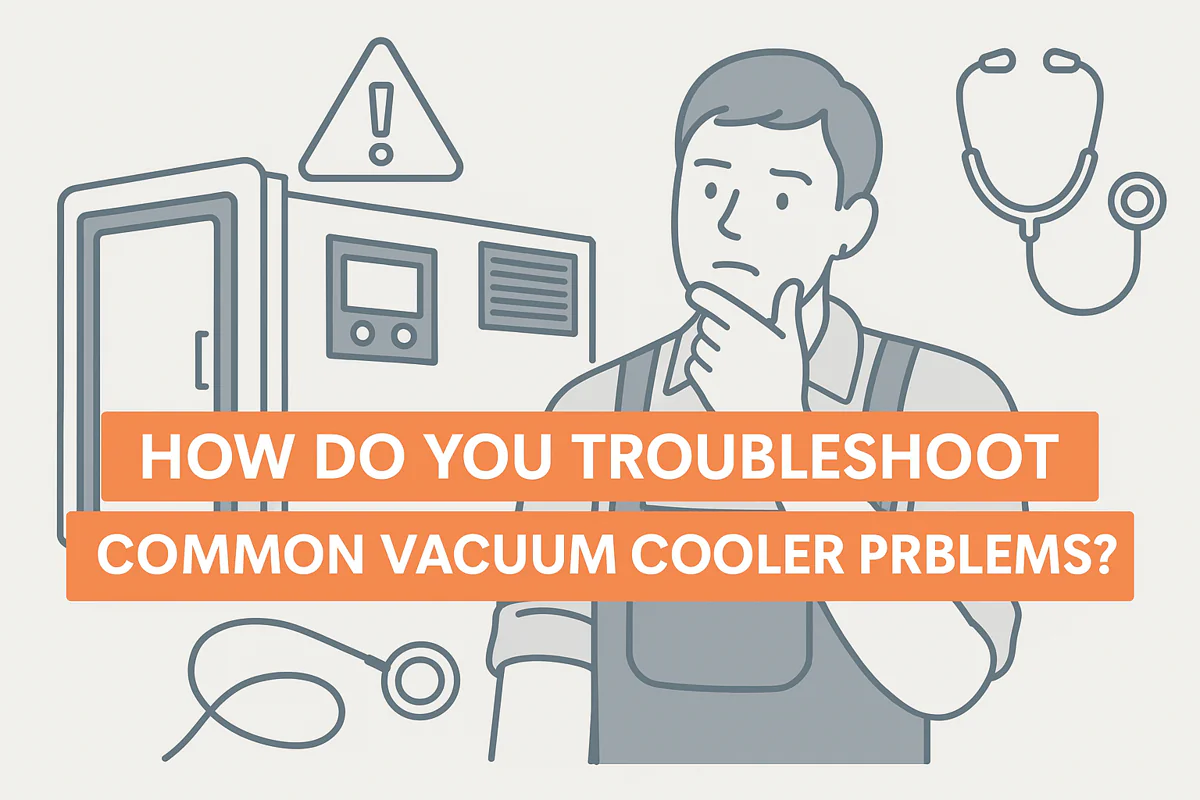
How Do You Troubleshoot Common Vacuum Cooler Problems?
Your harvest is ready, the pallets are stacking up, but your vacuum cooler suddenly stops. A red light is flashing,
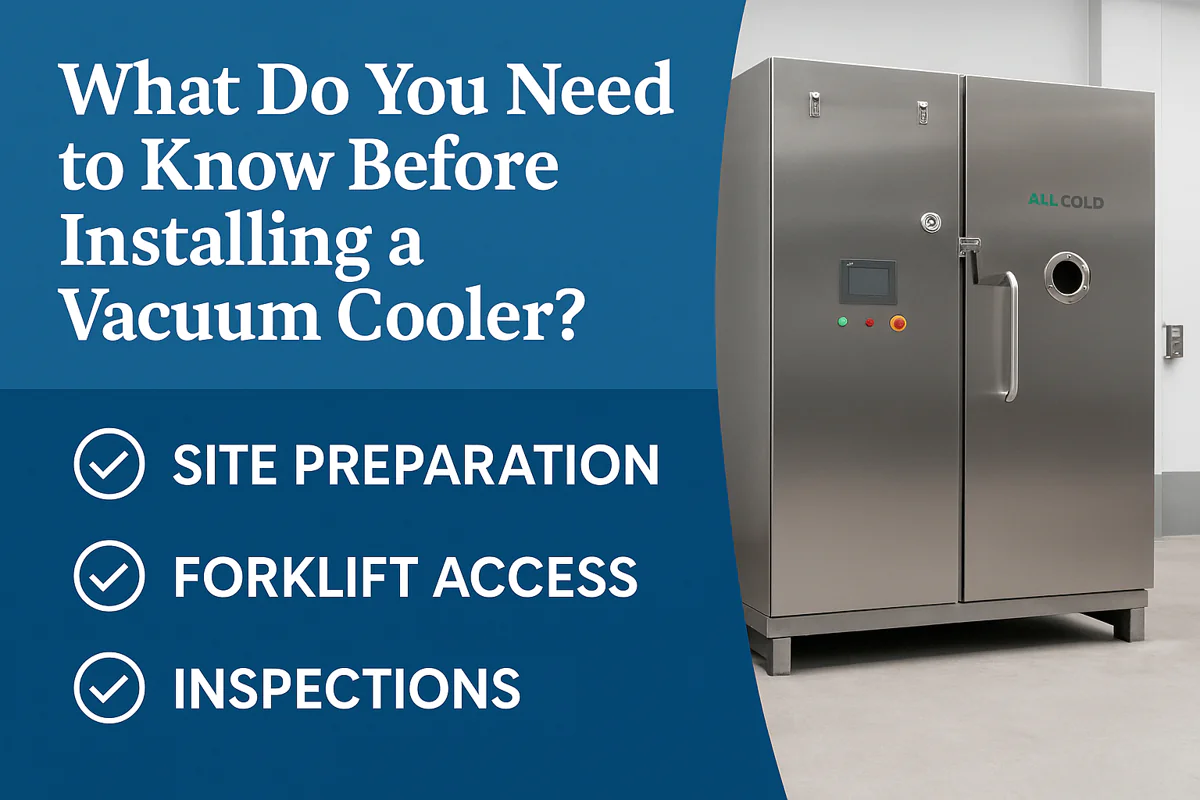
What Do You Need to Know Before Installing a Vacuum Cooler?
You are ready to upgrade your cooling process, but the thought of a complex installation is daunting. You worry about
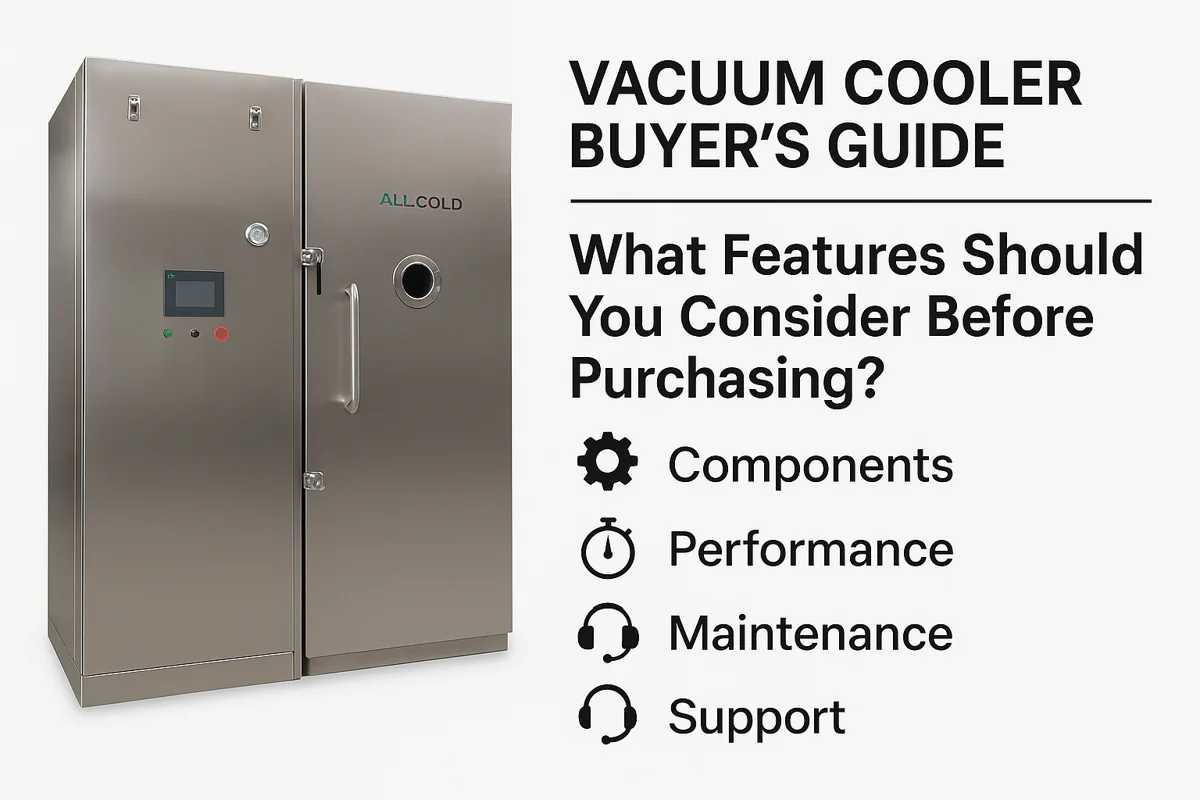
Vacuum Cooler Buyer's Guide: What Features Should You Consider Before Purchasing?
Making a major equipment investment is stressful. You know you need a vacuum cooler, but with so many options, choosing
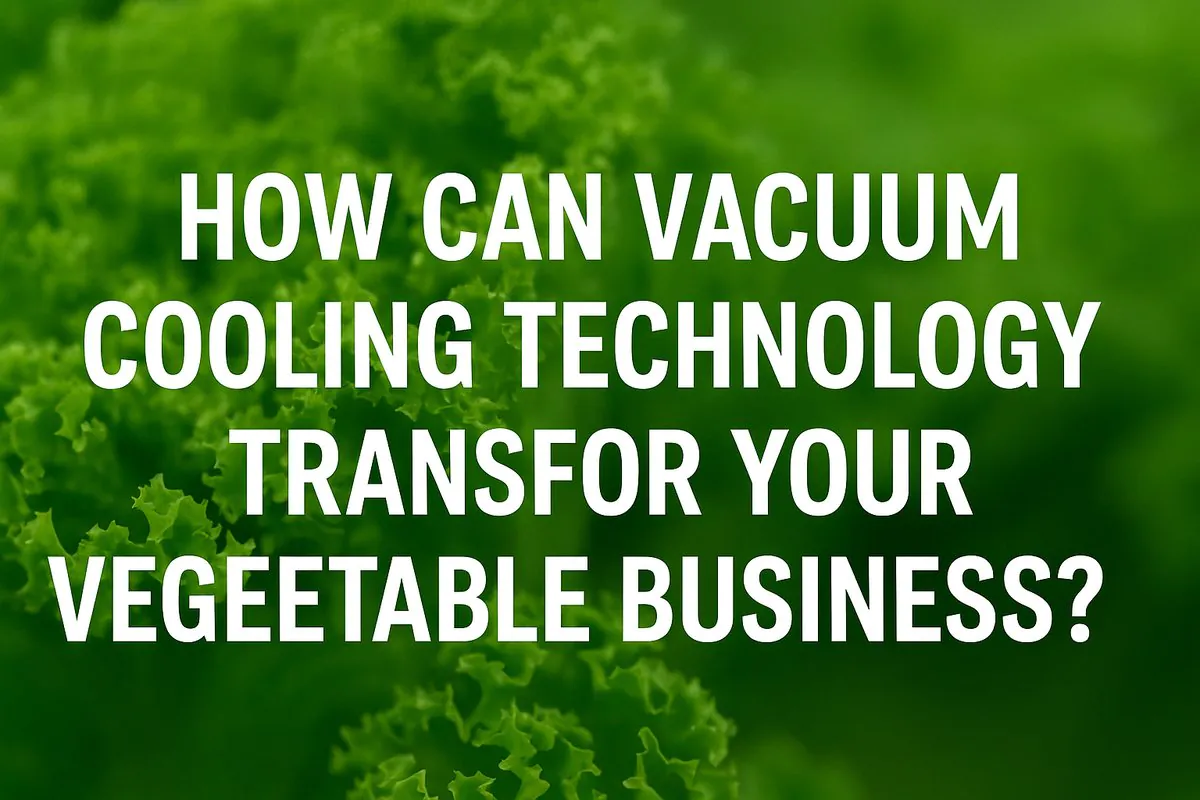
How Can Vacuum Cooling Technology Transform Your Vegetable Business?
You harvest beautiful, fresh vegetables, but by the time they reach the market, field heat has already started to degrade
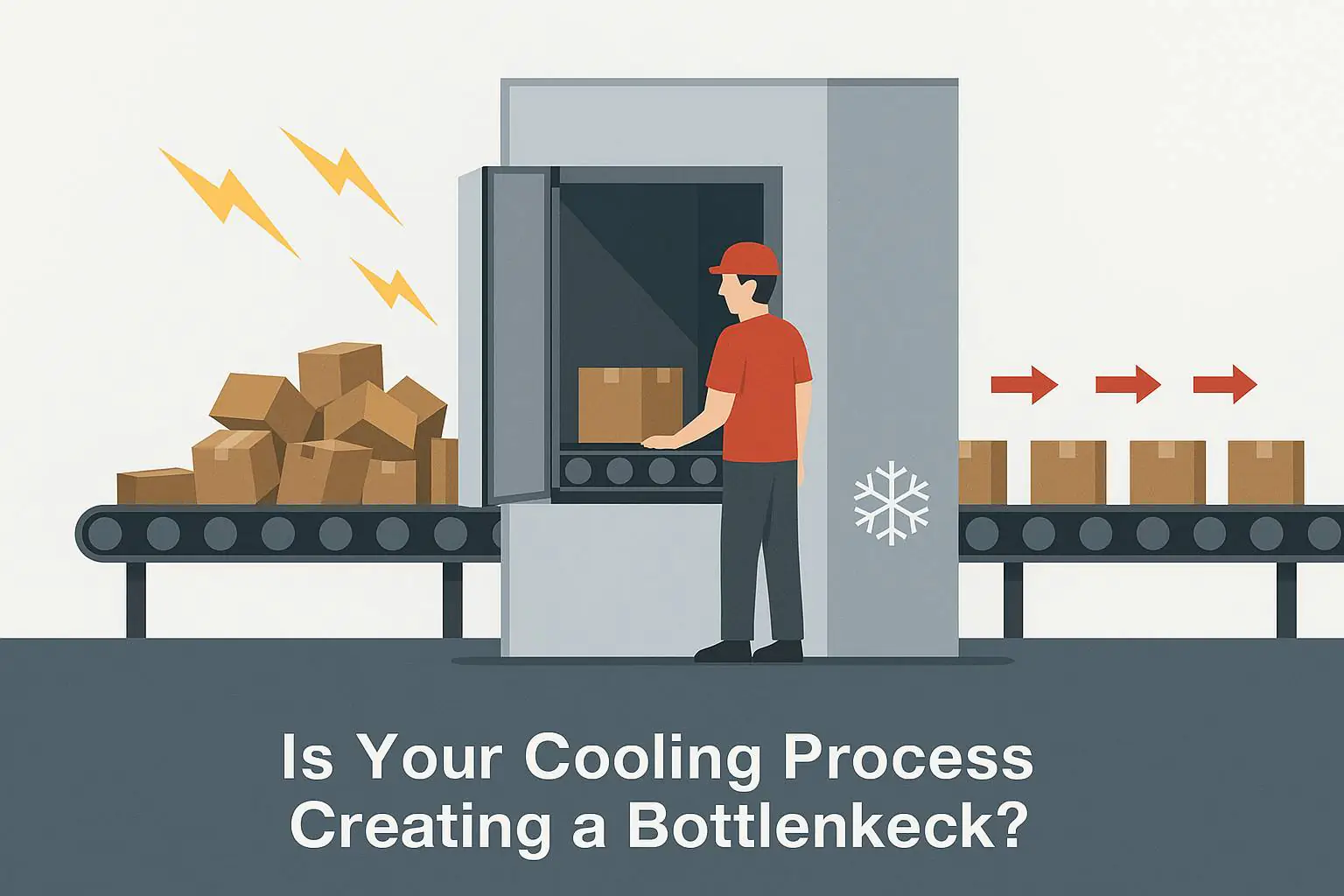
Is Your Cooling Process Creating a Bottleneck in Your Production Line?
Your production line constantly stops, waiting for your cooling process to catch up. This bottleneck wastes time, increases labor costs,
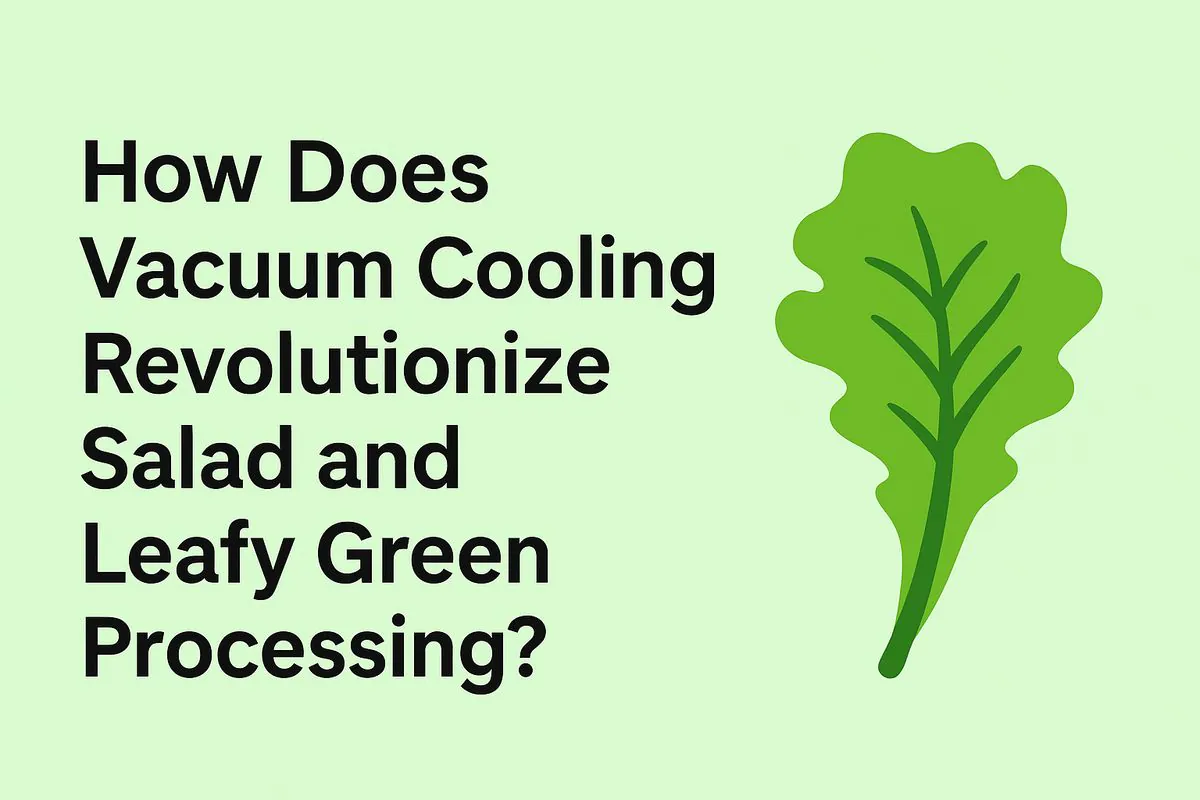
How Does Vacuum Cooling Revolutionize Salad and Leafy Green Processing?
Your leafy greens look perfect when harvested, but wilt and decay alarmingly fast. This short window cuts into profits and
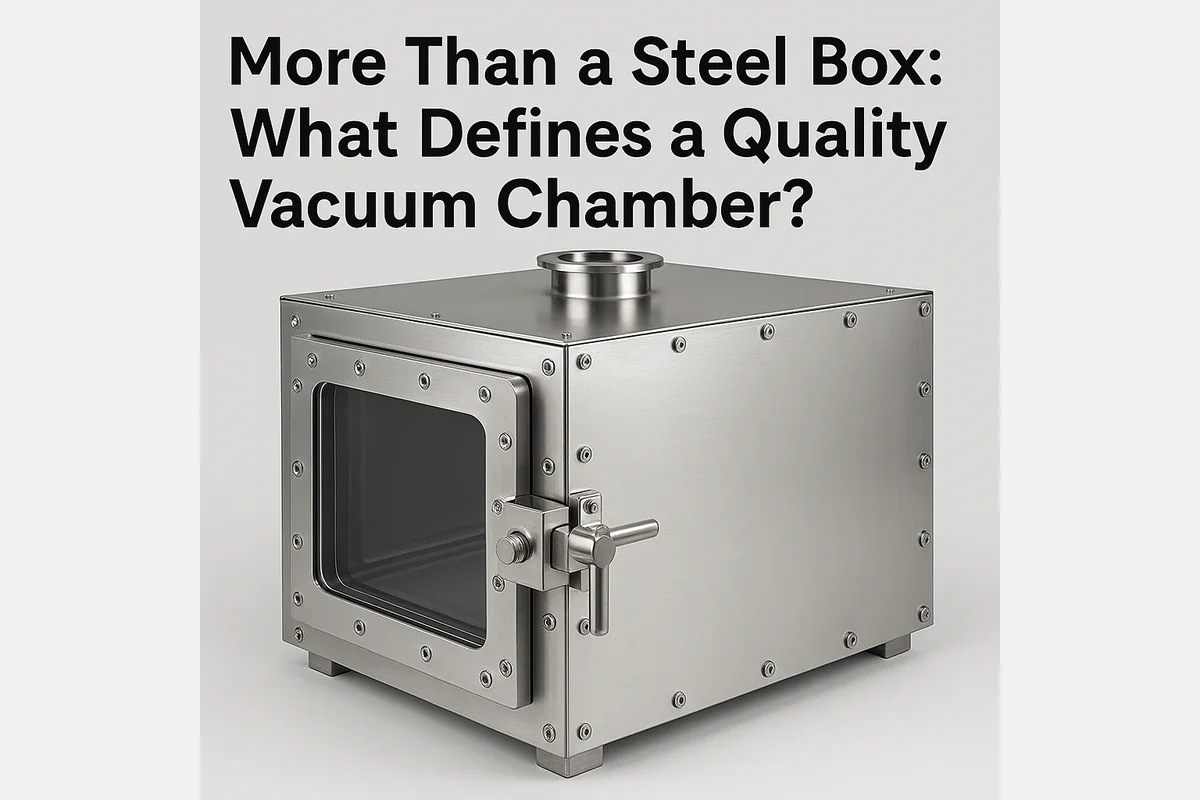
More Than a Steel Box: What Defines a Quality Vacuum Chamber?
You look at a vacuum cooler and see a big metal box with a door. It’s easy to think they

Beyond the Box: What Architectural Designs Make a Great Vacuum Cooler?
You’re looking to invest in a vacuum cooler, and many of them look the same: a simple steel box. But
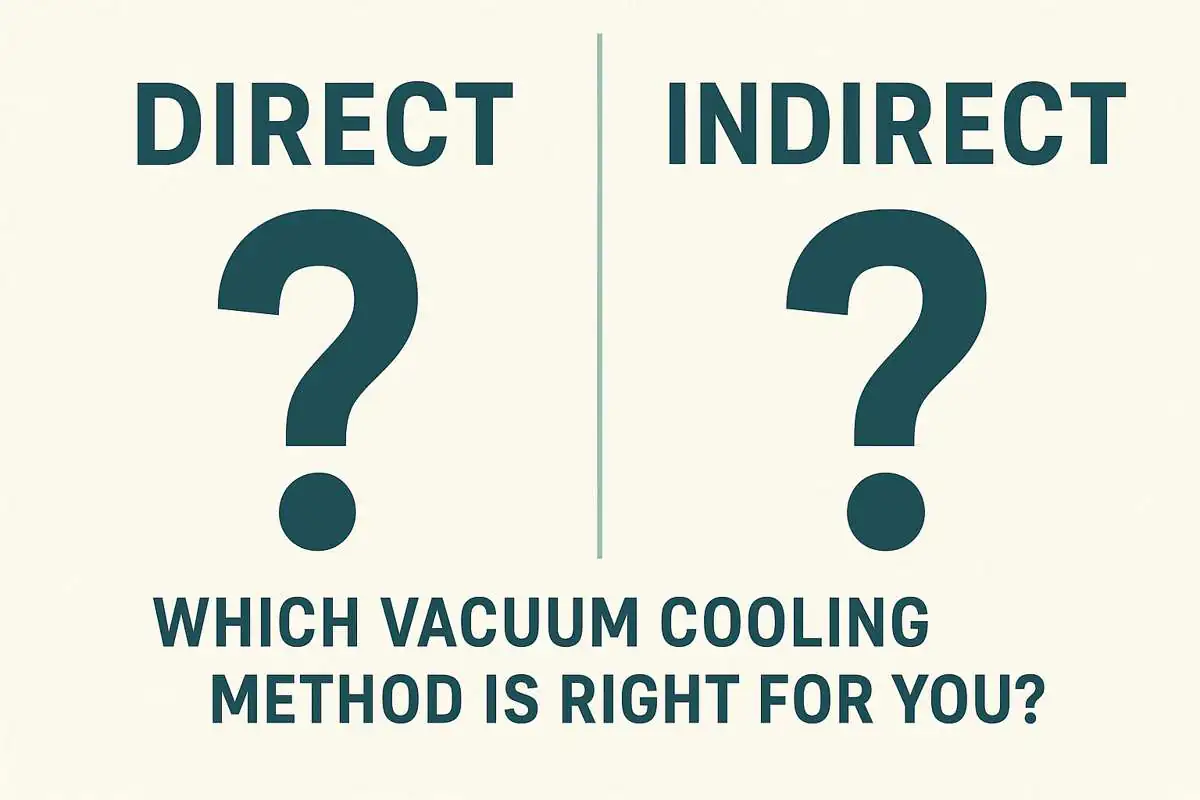
Direct vs. Indirect: Which Vacuum Cooling Method is Right for You?
You’ve decided on vacuum cooling, but a hidden technical choice emerges: direct or indirect cooling. This single design decision can
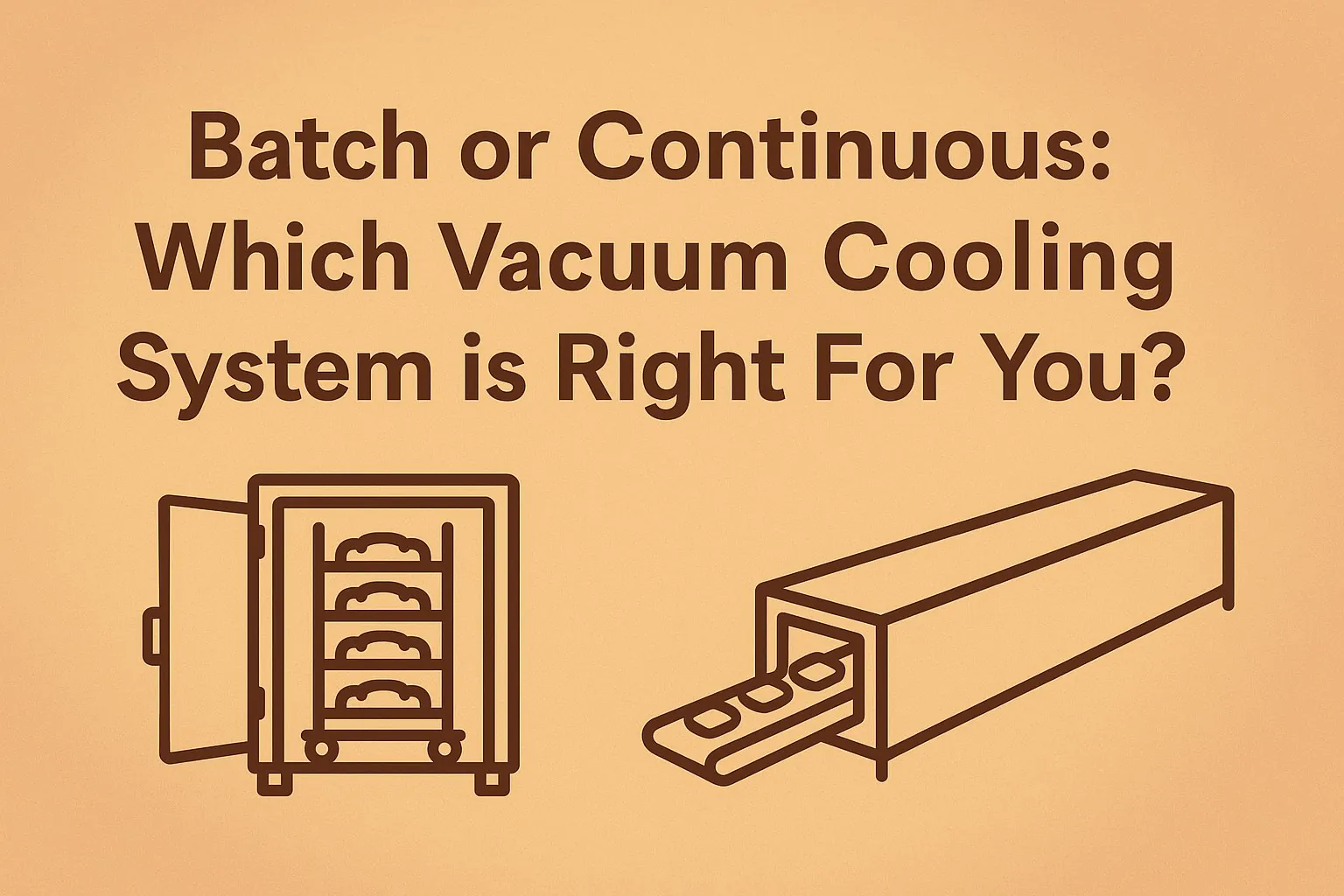
Batch or Continuous: Which Vacuum Cooling System is Right For You?
Choosing a major piece of equipment can be daunting. You know you need vacuum cooling, but then you see terms
